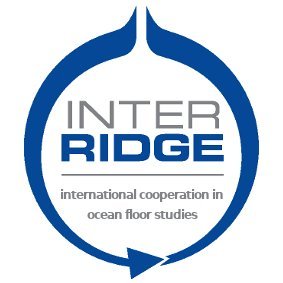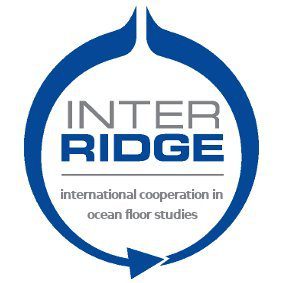InterRidge Working Group
Seafloor Massive Sulfides Resource along MOR
Chairs
Chunhui Tao (Second Institute of Oceanography, SOA, China) lqiu_sio@hotmail.com
Gregory Cherkashov (VNIIOkeangeologia, Russia) gcherkashov@gmail.com
Maurice Tivey (Woods Hole Oceanographic Institution, USA) mtivey@whoi.edu
Members
Fernando Barriga (University of Lisbon, Portugal), Ágata Dias (Institute of Science and Environment, USJ, Macau SAR), Amy Gartman (United States Geological Survey, USA), John Jamieson (Memorial University, Canada), John Kurian (National Center for Antarctic and Ocean Research, India), Jiabiao Li (Second Institute of Oceanography, SOA, China), Bramley Murton (National Oceanography Center, UK), Sang-Joon Pak (Korea Institute of Ocean Science and Technology, South Korea), Sven Petersen (GEOMAR, Germany), Desiree Roerdink (University of Bergen, Norway), Isobel Yeo (National Oceanography Center, UK)
Period
-present
Motivation
Since the first hydrothermal vents were discovered in the Galapagos in 1977 (Corliss et al., 1979), seafloor hydrothermal systems have increasingly attracted the attention of geologists, marine biologists and ocean and planetary scientists because of the extreme environment, unique life forms, and mineral deposits that provide modern-day analogs to ancient deposits now mined on land. Hannington et al. (2011) estimates that the total resource of copper and zinc from global seafloor sulfides are about 3×107t, far short of what is predicted to be delivered to the seafloor by hydrothermal venting. Recent surveys reveal that seafloor hydrothermal activity likely occurs along mid-ocean ridges (MOR) in all ocean basins regardless of spreading rate. Critically, these new observations suggest that slow and ultraslow spreading ridges have an excess of high temperature venting relative to their predicted magmatic and MOR spreading heat budgets (e.g. German et al., 2016). Hydrothermal deposits in these spreading environments have high concentrations of Cu and Au that are potentially large in tonnage and may reach 86% of the total MOR sulfide resource. Despite these recent discoveries, the occurrence, formation mechanism, distribution pattern and resource potential of hydrothermal systems on a global scale remains poorly documented and defined.
While methods for the detection of sulfide deposits in active fields by geophysical and plume surveys are well established, they are inadequate for identifying extinct or buried sulfide mineralization. These buried systems are in many cases associated with less vigorous venting, but appear to be more efficient at preserving mineralization compared with more active venting black smoker systems, where sulfides reside in contact with seawater and succumb to oxidation reactions. There is a need to develop more efficient methods to identify sulfide deposits associated with relict vent fields or sub-seafloor hydrothermal activity to properly assess the complete inventory of seafloor sulfide deposits in all spreading environments and to characterize the global geochemical fluxes from these systems. Only with this more complete characterization can we make progress on understanding global hydrothermal processes, including the roles of the heat source, fluid-rock reaction, sulfide deposit formation, preservation and the overall evolution of a deposit through time.
The new InterRidge Working Group on Seafloor Massive Sulfides Resource along Mid-Ocean Ridges aims to enhance the cooperation among researchers working in this specific field, and collectively addresses challenges in understanding the genesis, mechanisms and nature of Seafloor Massive Sulfides.
Objectives
The working group aims to address the following scientific problems:
- Understand the geological factors that contribute for the formation, distribution and preservation of seafloor massive sulfide deposits, including geological and tectonic setting
- Characterize the geological, geophysical and geochemical signatures that allow for the detection and documentation of inactive and buried sulfide deposits at Mid-Ocean Ridge-axis of off-axis setting
- Identify multi-scale observations that could be used to predict past, present and possibly future hydrothermal deposit formation
- Determine the spatial distribution pattern and resource potential of mid ocean ridges with various spreading rates
- Understand the timing and variations in the geological drivers for hydrothermal activity across mid-ocean ridge segment-scale systems
- Determine the dimensional structure and metal inventory for mid-ocean spreading ridges based on long-term heat flow, volcanism, fluid fluxes and sedimentation rates
- Understand the processes of seafloor and sub-seafloor sulfide formation, weathering, and their impact on crust-to-water column exchange in metals.
Working Group Roles
- Explore a collaborative initiative for projects/research scientists to share data, samples or information on research of polymetallic sulfide on ridges with different spreading rates.
- Improve the knowledge of polymetallic sulfide distribution (active and inactive) along mid-ocean ridges by detailed segment-scale studies of one or more mid-ocean ridges with a view to building a model for the metal distribution and fluxes of metals from the seafloor to the ocean. This will involve analysis of existing data and samples from global ridges plus an effort to coordinate additional research cruises and researchers to address knowledge gaps.
- Collaborate and engage the research community in an effort to understand the multidisciplinary interaction between geological, biological and environmental processes in order to facilitate best practices for regional monitoring strategies for consideration by the InterRidge Steering Committee.
Expected Outputs and Achievements
- Organize a workshop on seafloor hydrothermal processes and Seafloor Massive Sulfide Resources along one or more mid-ocean ridge segments.
- Coordinate and focus holistic and complementary research on one or more mid-ocean ridge segments and their hydrothermal deposits, both past and present.
- Foster studies on hydrothermal deposits formed at sedimented ridges and buried in sedimented regions adjacent to Mid-Ocean Ridges (off-axis regions). This could be a topic for a workshop.
Work Plans
- Convene a topical workshop every one or two years. It could be a special session at AGU, EGU or IGC meeting.
- Coordinate joint proposals for research at a ridge segment-scale.

